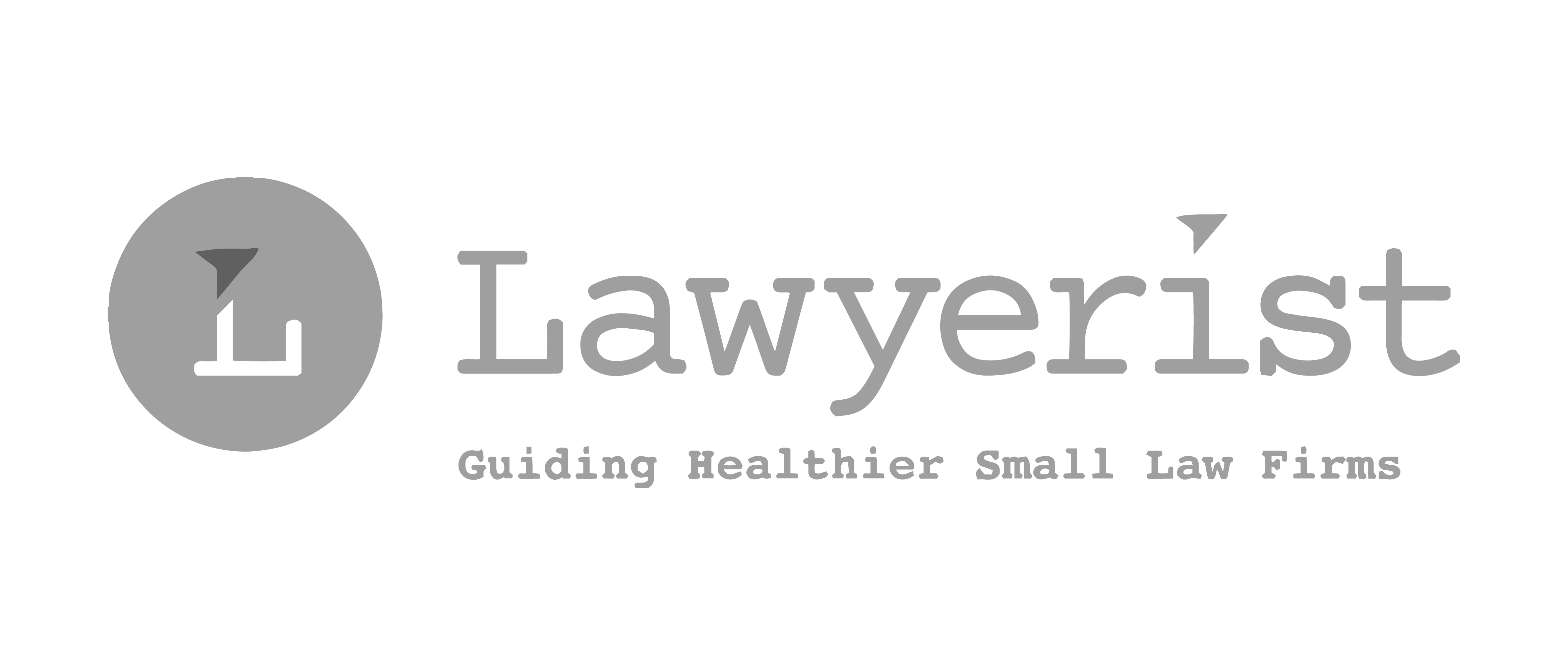Law Firm Sales: Solution Selling for Legal Services
I’ve been selling for a long time. I first learned how to sell through trial and error, driven by my interest in software and my experience inside law firms. I really learned to sell when an employer sent me to school where I learned that some of the strategies I had developed on my own were good, and some of my strategies could be ‘improved’. Suffice to say, I’ve been selling for a long time and have a pretty good sense of what works and what won’t work. I’d like to share what I’ve learned.
I. The Shift from a Sellers Market to a Buyers Market
Beginning shortly after the 2006 amendments to the Federal Rules of Civil Procedure there was an explosion in the costs of litigation. On top of the costs of lawyering, corporate counsel were faced with costly (sometimes staggeringly so) technical work related to electronically stored information (ESI). I believe this marks the beginning of a shift in the market for legal services.
Add the recession in 2008, and corporate counsels were faced with strict budgeting mandates that forced a change in how they purchased legal services. The ensuing 3 years saw a complete shift from a sellers market to a buyers market for legal services. Add the advent of the internet, and the result for law firms is a competitive landscape which is more aggressive than perhaps at any time in history.
An essential shift has occurred in how buyers (general counsel) buy legal services.
- Buyers no longer have the option to select outside counsel as a matter of personal preference. Sourcing is done in a systematic, methodical, and objective way.
- Generals counsel are working with fewer outside counsel. This helps them manage more closely to budgets.
- Generals counsel are bringing more work in-house.
The bottom line: (a) getting the opportunity to bid is more difficult, and (b) writing a winning bid is more difficult. So how do we win business in this environment?
II. It Takes a Village
Selling is truly a team sport. If you win a sale through bidding or any other process, you can be certain that a wide cast of characters deserve accolades. If you are a solo or small practice you will need some help to sell successfully. If you are a larger firm then you have the resources which probably include:
- Senior Management who are responsible for understanding the firm’s unique differences, core strengths, and areas of weakness – and who are responsible for building a strategic business development plan around those attributes along with the funding to execute the plan. The strategic business development plan will drive the overall message to the marketplace, the development of specialty practice areas, client service protocols, and much more.
- Marketing senior executive and their team who execute the strategic plan. If everything is on target, you will be reaching qualified buyers. Being on target is an almost magical mix of being unique (differentiated), expressing value, and connecting in a personal way with potential buyers.
- The Pricing Director who has spent time understanding your internal costs, where your peer firms are pricing, and what the buyer’s desired pricing is.
- The Business Development team who must bring it all together. This is where you come in.
III. Winning the Business
I define ‘selling’ as the matching of a solution with a problem. I subscribe to the school of “Solution Selling” which has evolved into six areas of focus that offer a framework within which you successfully match solutions you sell – with problems your prospect is trying to solve.
First a word on what selling is NOT. If your solution doesn’t fit the needs of the buyer, then you will not sell. No matter how hard you try to pound your square peg into the round hole, the buyer will not sign. Conversely – if you have a solution that matches the buyer’s problem and is available at the right price at the right time, you will close the business.
IV. Solution Selling
My good friend, Dr. Wikipedia, offers this these components of Solution Selling:
- Prospecting
- Diagnosing customer needs
- Crafting a potential solution
- Establishing value
- Bargaining for access to decision-makers
- Positioning proof, ROI and the total solution
- Negotiating a win-win solution
- Following up to ensure customer success
We’ll examine each of these in detail, with special emphasis on 2, 3, and 8.
Prospecting. Prospects can be divided into several categories. There are cold prospects (that’s the entire world), interested prospects who are new to you (warm prospects) and existing clients (the best possible prospects). If marketing is on target, you are working with warm prospects that may have noticed you because of a seminar, webinar, press release, social media connection, blog post, etc.
Ignore cold prospects. You simply won’t get worthwhile results in this category especially if you compare spending your time working with warm prospects or existing clients. Only if you’ve called every client and exhausted every warm prospect, would you try contacting cold prospects.
Diagnosing customer needs. This is the essence of selling. Do this well and you will be successful in selling. ‘Diagnosing customer needs’ is often called the ‘discovery phase’ and is essential in understanding the problem your prospect is trying to solve. It is the only way to fashion a solution that matches the problem. Anything less is guesswork.
The discovery phase is a great way to engage a prospect. It takes a certain amount of natural curiosity and excellent listening skills, and proves to the prospect that you are interested in their problem. The discovery phase can begin before you ever meet the prospect, by keeping up to date on industry trends, regulatory changes, or company news as a few examples. This ‘discovery from a distance’ will strengthen that in-person discovery meeting.
The discovery phase will also help you understand when to move on. There is nothing worse that presenting your solution, only to be confronted with a quizzical look that says .. ‘why am I wasting my time.. I don’t need this solution’.
Crafting a potential solution. Crafting a potential solution means developing a solution that solves the problem the prospect articulated in the discovery phase. It’s so logical that it is amazing how often this is overlooked. A thorough discovery phase will make it easy to understand what the solution should look like.
Deliver a solution that leverages your core strengths and offers a solution unique to your firm. Do this well and your prospect will see you as a valued and trusted partner.
Establishing value. A well-crafted solution may speak for itself, but never assume so. Value can be hard to quantify and the way it is defined may vary from one prospect to another. In the discovery phase, ask how the prospect defines value and you’ll understand how to develop a solution that drives value. Establishing value is absolutely essential when it comes to negotiating price.
Bargaining for access to decision-makers. Access to decision-makers is essential and sometimes you need to negotiate your way to the top. However, I believe that well-targeted and effective marketing will get the attention of the decision-makers.
Anything less than contact with the decision-maker means risking not getting correct information about the problem (or the decision-makers’ perception of the problem) or how the value of a solution is defined by your prospect. Sometimes you need to ask for access, and explaining the discovery phase may help. One reason that prospecting existing clients is so valuable is .. you are already in touch with the decision-maker.
Positioning proof, ROI, and the total solution. This component of solution selling has to do with ‘proving’ that yours is the best solution. If you are selling widgets then showing Return on Investment (ROI) is probably easy – but with legal services it can indeed be more challenging. Providing proof often means demonstrating risk reduction, which can be subjective. This is where ‘proof’ (other similar cases won, meeting the team, going back to the solution you are providing and the match with the problem to be solved) can be essential in closing the business.
Negotiating a win-win solution. In today’s world of alternative fee arrangements, negotiating a win-win solution can be challenging (but your profitability depends on it). This component of solution selling begins with what value you are delivering (defined by the client), how the matter will be managed (remember – clients want transparency and predictability), and what you deliver. There have been plenty of deals that were NOT signed because the seller and the buyer didn’t agree on value, which is why establishing value is so essential. If the buyer sees value – negotiating falls right into place.
Following up to ensure customer success. This component of solution selling comes long after the engagement letter is signed which is why I suspect it is often overlooked. In the words of Mayor Koch, just ask ‘how are we doing?’ as often as you can. Client feedback is a vital part of successful selling. If you’re falling short you will be alerted to necessary adjustments. If you’re doing well you’ll be informed of where you have strengths. Ask – and ask often.
A brief word about client service
It would be a shame to be eliminated from the next client engagement because of faulty client service. In developing the firm’s business development strategy, the team would be remiss in not addressing this core component. Your most fertile prospects are your clients, and excellent client service is your firm’s way of continuously affirming to the client that they are valued.
Summary
Solution Selling is a fascinating matrix of moving parts, which, when executed well, is a recipe for success. It’s a key ingredient in law firm sales, and a responsibility shared by everyone at the firm.
ABOUT THE AUTHOR:
Bill Lipner, of Discovery Partners, Inc., has an extensive background in legal technology with a focus on content and how it is managed to increase efficiency and reduce risk. Bill’s work has included roles in business development and consulting, and he is editor of a daily newsletter for law firms and law departments which covers the business of law. In his spare time, Bill blogs about the application of technology in legal services at www.lawyerpdf.com.
Share post:








